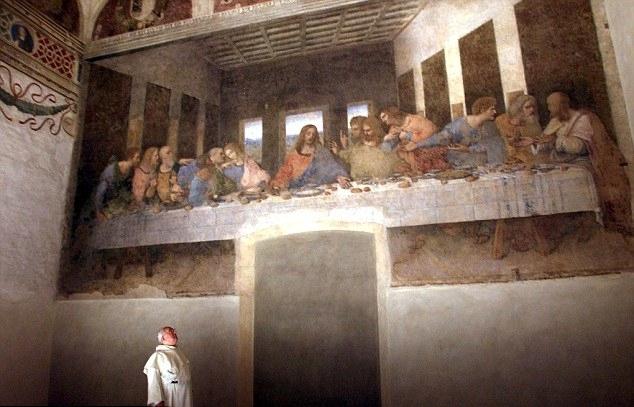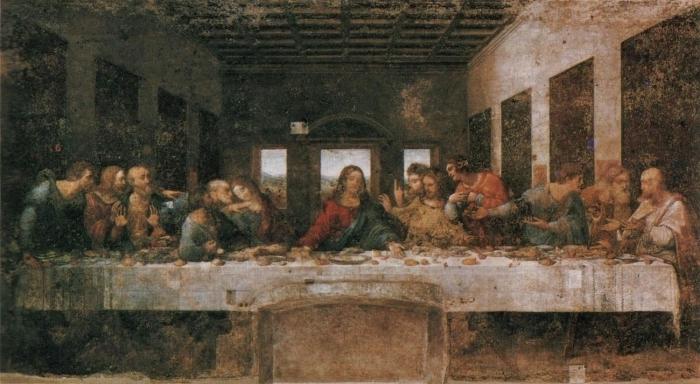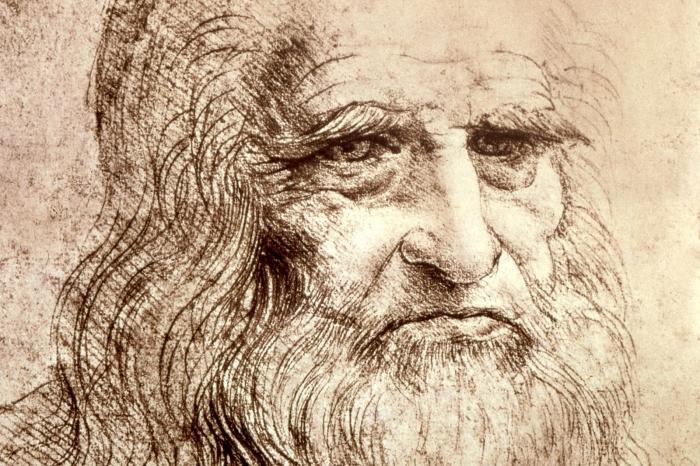For many art historians and historians, The Last Supper by Leonardo da Vinci is the greatest work. This mural measuring 15 x 29 feet was created between 1495-1497. The artist executed it on the refectory wall in the Milan Monastery of Santa Maria del Grazie. Even in the era when Leonardo himself lived, this work was considered the best and most famous. According to written evidence, the picture already in the first twenty years of its existence began to deteriorate. The Last Supper by da Vinci was painted on dry plaster with a large layer of egg tempera. Under the paint was a composite rough sketch drawn in red. The fresco customer was Lodovico Sforza - Duke of Milan.

The Last Supper is a picture of the moment Jesus Christ announced to his disciples that one of them would betray him. The subjects of the apostles have repeatedly become the subject of controversy, but judging by the inscriptions on the copy of the painting stored in Lugano, from left to right it is: Bartholomew, Jr. Jacob, Andrew, Judah, Peter, John, Thomas, Elder Jacob, Philip, Matthew, Thaddeus, Simon Zelot. Art historians believe that the composition should be taken as an interpretation of communion, because with both hands Christ points to a table with bread and wine.
Unlike other similar paintings, The Last Supper shows an amazing variety of emotions of characters caused by the message of Jesus. No other creation based on the same plot can even be compared closely with the da Vinci's masterpiece. What secrets did the famous artist encrypt in his work?
Authors of the discovery of the Templars, Lynn Picknett and Clive Prince, claim that The Last Supper is filled with encrypted characters. Firstly, to the right of Jesus (for the viewer to the left), in their opinion, it’s not John sitting at all, but some woman in a robe that contrasts with the robe of Christ. The space between them resembles the letter “V”, while the figures themselves form the letter “M”. Secondly, they believe that next to the image of Peter in the picture you can see a certain hand with a clenched knife, which cannot be attributed to any of the characters. Thirdly, Thomas depicted to the left of Jesus (for the viewer to the right) with his raised finger turns to Christ, and this, according to the authors, is a gesture characteristic of John the Baptist. Finally, fourthly, there is a hypothesis that Thaddeus, sitting with his back to Jesus, is a self-portrait of da Vinci himself.

Let's figure it out in order. Indeed, if you look closely at the picture, you can see that the person sitting to the right of Christ (for the viewer to the left) has feminine features. But do the letters “V” and “M” form a symbolic load in themselves? Prince and Picknett argue that such a placement of figures contains a hint that the character with female features is Mary Magdalene, and not John at all. In this case, the letter "V" symbolizes the feminine. And "M" just means the name - Mary Magdalene.
As for the hand that has been deprived of a body, with careful examination it is still clear that it belongs to Peter, he just turned it around, which explains the unusual situation. There is nothing special to say about Thomas, who raised his index finger up like John the Baptist. Disputes in this regard may last a long time, and decide whether or not to agree with this assumption. The Apostle Thaddeus, as Prince and Picknett noted, does have some similarities with Leonardo da Vinci himself. In general, in many paintings by the artist dedicated to Christ or the Holy Family, one can see the same detail: at least one of the figures has his back turned to the main character.

The Last Supper was recently restored, which made it possible to learn a lot about it. But the true meaning of forgotten symbols and secret messages is still unclear, therefore, new assumptions and conjectures are born. Who knows, maybe someday we will be able to learn at least a little about the plans of the great master.